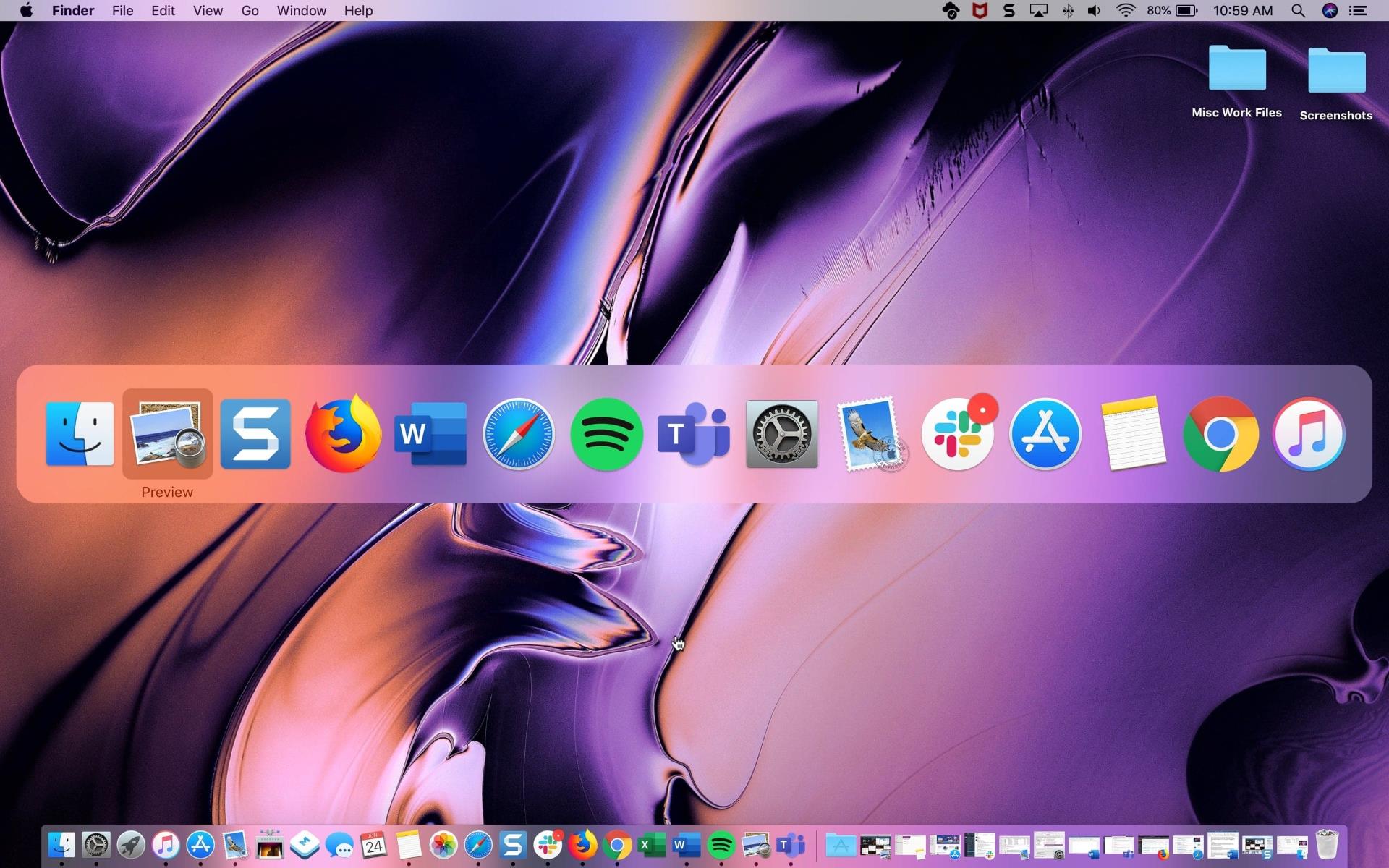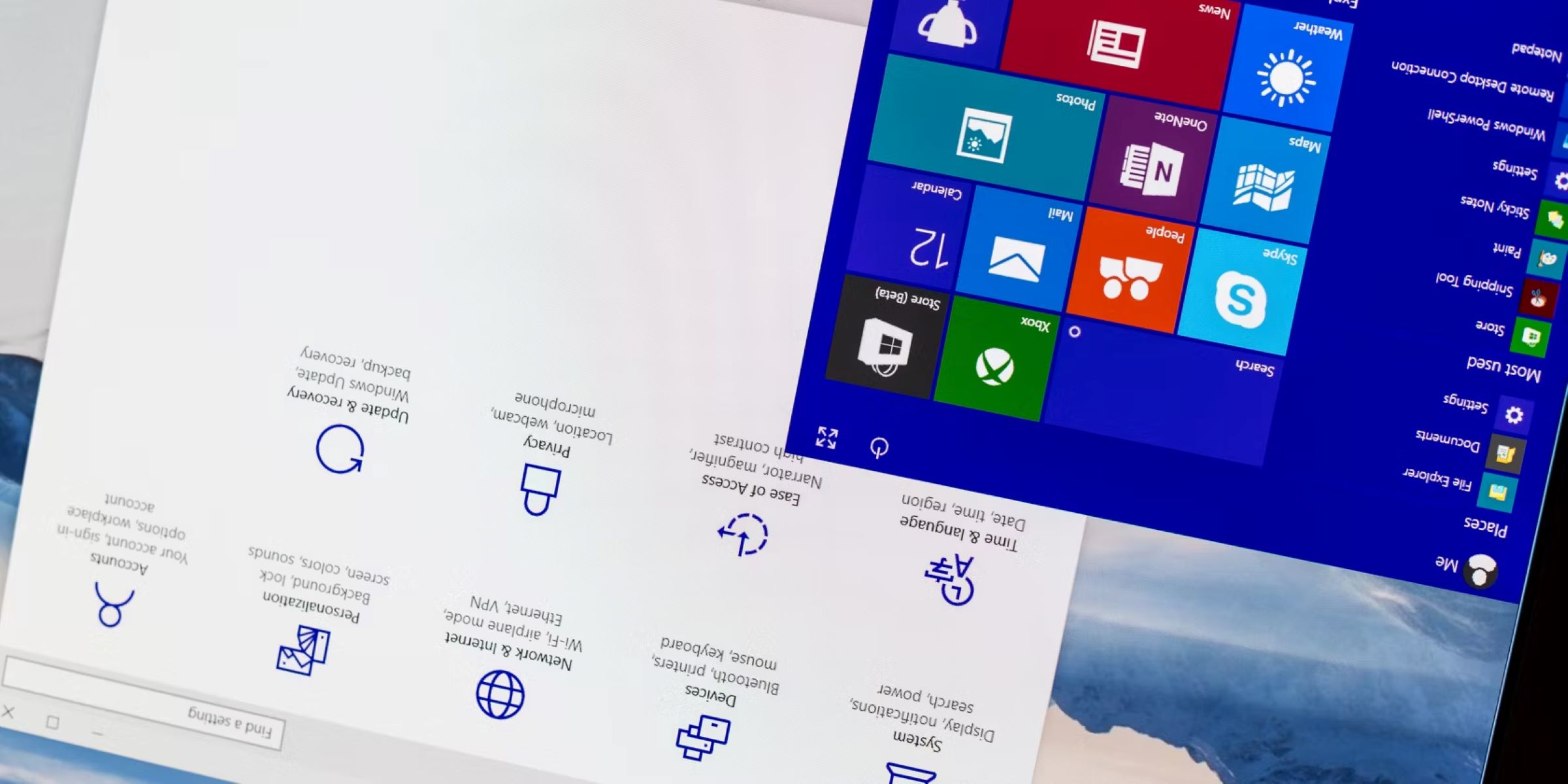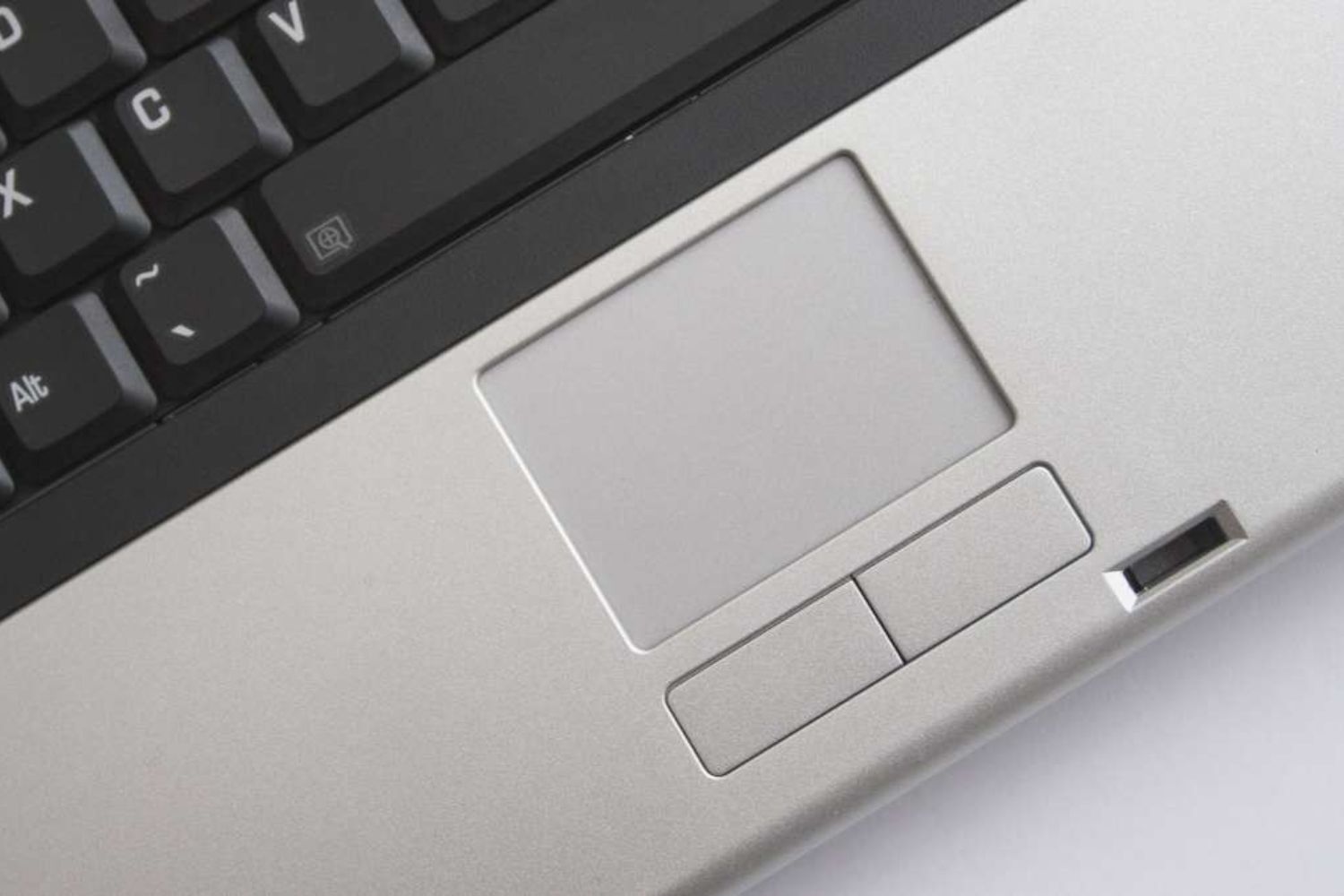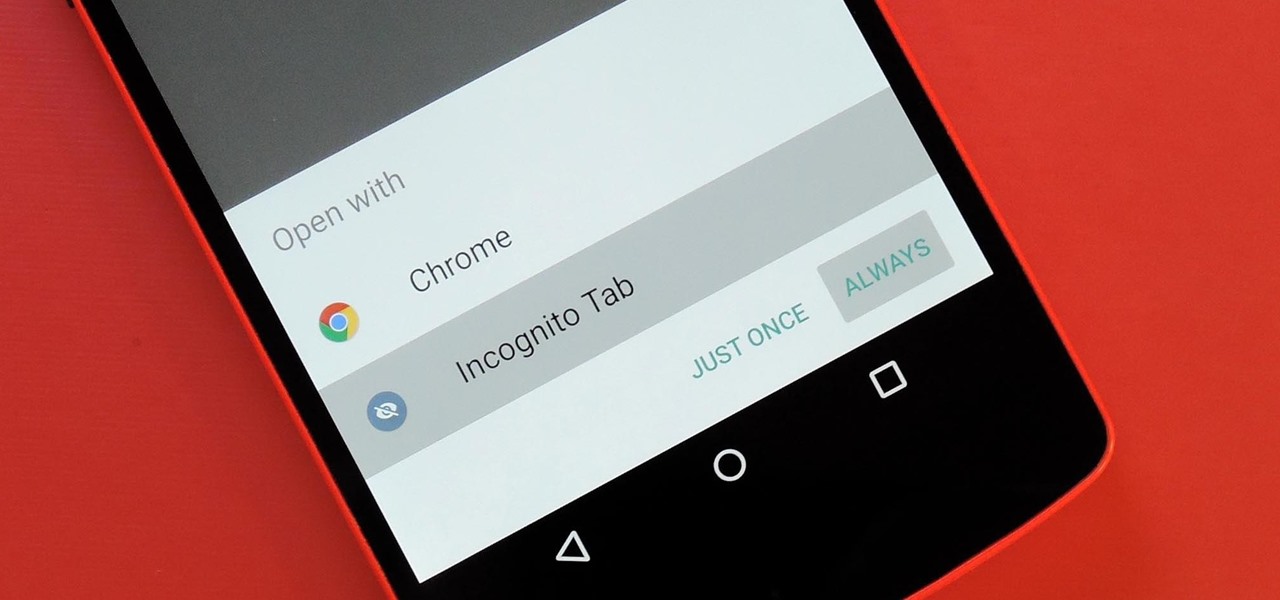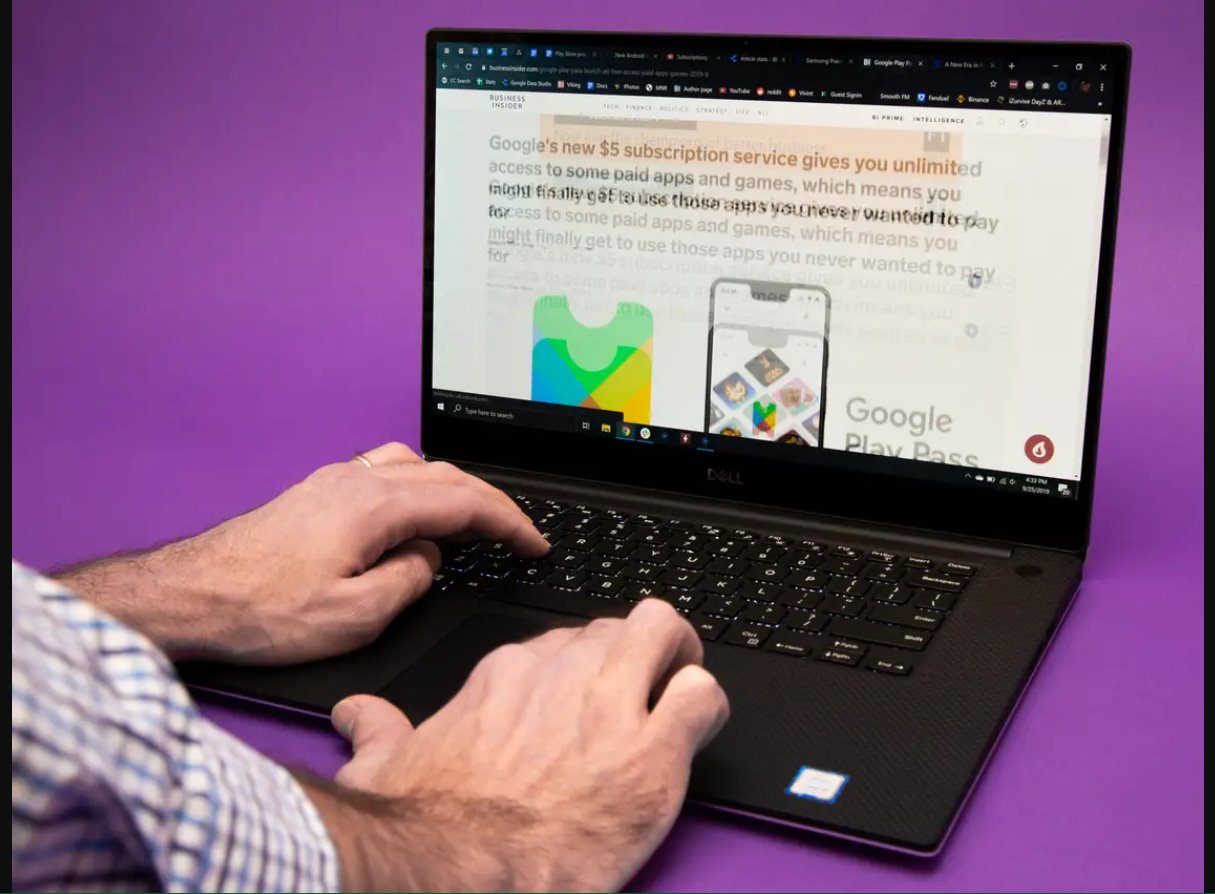Introduction
In today’s fast-paced digital world, multitasking has become an essential skill. Whether you’re a professional working on multiple projects or a student juggling between various research materials, the ability to switch between application windows quickly is crucial for maximizing productivity. Fortunately, there are several efficient methods to expedite this process on your computer.
In this article, we’ll explore different ways to swiftly switch between application windows, both for Windows and Mac users. We’ll cover built-in shortcuts, taskbar thumbnails, task view, and even third-party applications that can enhance your window-switching experience. So, let’s dive in to discover the quickest ways to navigate seamlessly through your computer’s applications and boost your overall efficiency.
Before diving into the various methods, it’s important to note that the specific keys and features mentioned in this article may vary depending on the operating system version and the computer manufacturer. However, the fundamental concepts and techniques outlined here can be applied to most Windows and Mac devices.
Now that we’ve set the stage, let’s get started with the first method: using the Alt + Tab shortcut.
Using Alt + Tab
The Alt + Tab keyboard shortcut is a classic and widely known method for quickly switching between application windows on a Windows computer. By pressing the Alt key and then the Tab key while holding Alt, you can cycle through the open windows in a visually appealing and intuitive manner.
Here’s how to use Alt + Tab effectively:
- Press and hold the Alt key on your keyboard.
- While still holding the Alt key, press the Tab key.
- A window switcher interface will appear, displaying thumbnails of the currently open windows.
- Continue pressing the Tab key while holding Alt to cycle through the open windows.
- Release the Alt key to switch to the selected window.
One of the advantages of using the Alt + Tab shortcut is the ability to preview the application windows in real-time. This feature allows you to see the content of each window as you cycle through them, making it easier to identify the desired window quickly.
Additionally, you can use the Shift key along with Alt + Tab to cycle through the windows in the reverse order. This can be useful when you overshoot the desired window and need to backtrack.
It’s important to note that some newer versions of Windows have introduced an updated version of the Alt + Tab switcher, known as the Task View. Task View provides a more comprehensive overview of the open windows and allows you to switch between virtual desktops as well. We’ll explore Task View in more detail in the following section.
Using Win + Tab
For Windows users, an alternative method to quickly switch between application windows is by using the Win + Tab keyboard shortcut. This shortcut is available on newer versions of Windows, such as Windows 10 and Windows 11, and provides an enhanced window-switching experience through the Task View feature.
Here’s how to use Win + Tab effectively:
- Press and hold the Windows key (also known as the Win key) on your keyboard.
- While holding the Windows key, press the Tab key.
- The Task View interface will appear, displaying a large preview of the currently open windows.
- Release the Windows key to switch to the selected window.
The Win + Tab shortcut not only allows you to switch between open windows but also provides a visual representation of virtual desktops if you have multiple desktops set up. This can be particularly useful for organizing different workspaces or separating personal and professional tasks.
Furthermore, the Task View interface provides additional functionality beyond window switching. It allows you to create, close, and switch between virtual desktops, giving you the flexibility to keep your work and personal activities separate or organize different projects efficiently.
Note that the availability and features of the Task View interface may vary depending on your Windows version and settings. If you are using an older version of Windows that does not have the Task View feature, you can still use the Alt + Tab method mentioned earlier to switch between windows.
The Win + Tab keyboard shortcut provides a visually appealing and convenient way to navigate through your open windows, whether you’re working on a single desktop or utilizing multiple virtual desktops to stay organized.
Using Taskbar Thumbnails
Another method for quickly switching between application windows on a Windows computer is by utilizing the taskbar thumbnails. The taskbar, located at the bottom of the screen, displays icons for the open apps and programs. By hovering your mouse cursor over a specific application icon, you can access a thumbnail preview of the open windows associated with that application.
Here’s how to use taskbar thumbnails effectively:
- Look at the taskbar at the bottom of your screen to locate the application icons.
- Find the icon representing the application window you wish to switch to.
- Hover your cursor over the application icon, without clicking.
- A thumbnail preview of the open windows associated with that application will appear.
- Click on the desired thumbnail to switch to that window.
The taskbar thumbnails provide a visual representation of the open windows associated with each application, allowing you to quickly identify the desired window. This can be especially useful if you have multiple windows open for a specific application, such as different documents or browser tabs.
In addition to the thumbnail previews, some versions of Windows also display text labels when you hover over an application icon with multiple open windows. These labels provide the window titles, making it even easier to select the desired window.
If you have a crowded taskbar with numerous application icons, you can utilize the “Use small taskbar buttons” option in the taskbar settings to maximize space. This option reduces the size of the application icons, allowing more icons to fit within the taskbar area and making it easier to hover over specific icons for the thumbnail previews.
Using taskbar thumbnails is a convenient method for quickly switching between application windows, particularly if you prefer a more visual approach to window navigation. With just a hover and a click, you can seamlessly jump between the open windows of your desired applications.
Using Task View
Task View is a powerful feature available on newer versions of Windows, such as Windows 10 and Windows 11, that allows users to manage and switch between application windows and virtual desktops. It provides a comprehensive view of all open windows and offers a more organized approach to multitasking.
Here’s how to use Task View effectively:
- Click on the Task View button on the taskbar (usually located next to the search icon). Alternatively, you can use the Win + Tab shortcut, as mentioned earlier.
- The Task View interface will appear, displaying large previews of the open windows.
- Click on the desired window preview to switch to that window.
- If you have set up multiple virtual desktops, you can use the horizontal bar at the bottom of the screen to navigate between them.
- To create a new virtual desktop, click on the “New Desktop” button in the bottom-right corner of the screen. This allows you to separate different projects or tasks into separate desktop environments.
- To close a virtual desktop, hover your mouse cursor over the desktop preview and click on the “X” button that appears.
Task View provides a visual representation of all open windows, making it easy to identify and switch between them with a simple click. Additionally, the ability to create and manage virtual desktops enables users to keep their workspaces organized and minimize clutter.
If you frequently work on different projects or want to keep personal and professional activities separate, virtual desktops can be a game-changer. You can have one desktop dedicated to work-related tasks, another for personal use, and additional desktops for specific projects or endeavors.
In addition to the basic functionality mentioned above, Task View also offers other features like the ability to move windows between virtual desktops and the option to show windows from all desktops in the taskbar. These additional features can further enhance your window-management workflow and improve productivity.
Task View is a valuable tool for efficiently managing and switching between application windows, as well as organizing your workspace with virtual desktops. By leveraging this feature, you can streamline your multitasking and have a more structured approach to your computer usage.
Using Keyboard Shortcuts
Keyboard shortcuts are an efficient way to navigate between application windows on both Windows and Mac computers. By memorizing a few key combinations, you can quickly switch between windows without having to reach for the mouse or trackpad.
Here are some commonly used keyboard shortcuts for window switching:
- Windows:
- Alt + Tab: Cycle through open windows (as mentioned earlier).
- Alt + Esc: Switch to the next window in the order they were opened.
- Win + D: Show the desktop and minimize all windows. Repeat to restore the windows.
- Win + number key (e.g., Win + 1, Win + 2): Switch to the corresponding application on the taskbar.
- Mac:
- Command + Tab: Cycle through open applications.
- Command + ~ (tilde key): Cycle through open windows of the current application.
- Command + Option + Esc: Force quit the current application.
- Control + Down Arrow: Exposé’s App Windows view, showing all open windows of the current application.
- Control + Up Arrow: Mission Control, providing an overview of all open windows and desktops.
By incorporating these keyboard shortcuts into your workflow, you can switch between application windows with lightning speed. Practice using these shortcuts regularly to make them second nature and boost your productivity.
Furthermore, both Windows and Mac operating systems allow you to customize and create your own keyboard shortcuts. This flexibility enables you to assign specific key combinations to switch to your frequently used applications or perform other window-switching actions. Check your system settings or preferences to explore this customization option.
Using keyboard shortcuts for window switching eliminates the need for mouse movements and can significantly increase your overall productivity. Take the time to familiarize yourself with these shortcuts and integrate them into your daily computing routine to streamline your workflow.
Using Exposé or Mission Control (Mac)
Mac users have the advantage of two powerful features, Exposé and Mission Control, which facilitate window switching and organization. These features provide a bird’s eye view of all open windows and allow for seamless navigation between them.
Here’s how to use Exposé and Mission Control effectively on a Mac:
- Exposé:
- Swipe up with three or four fingers using the trackpad (depending on your settings) to activate Exposé. Alternatively, you can press the F3 key if using a keyboard without a trackpad.
- All open windows will be displayed in a grid, making it easy to see and select the desired window.
- Click on the window you want to switch to, or use the arrow keys to navigate between the windows and press Enter to select the desired window.
- Mission Control:
- Swipe up with three fingers using the trackpad or press the Mission Control key (usually F3) on the keyboard.
- Mission Control will display a thumbnail overview of all open windows, virtual desktops, and full-screen applications.
- To switch to a specific window, click on its thumbnail, or use the arrow keys to navigate and press Enter to select.
- You can also create a new virtual desktop by clicking on the “+” button in the top-right corner of Mission Control.
Exposé and Mission Control provide a visual representation of all open windows and virtual desktops, allowing for quick and intuitive window switching. The ability to easily view and select windows from a centralized interface enhances productivity and organization.
Furthermore, you can customize the gestures and settings for Exposé and Mission Control in the System Preferences. This customization allows you to fine-tune the behavior of these features to suit your preferences and workflow.
These powerful features are native to Mac computers and offer a seamless way to navigate between application windows and virtual desktops. By incorporating Exposé and Mission Control into your workflow, you can improve window management and boost your efficiency on your Mac.
Using Third-Party Applications
In addition to the built-in features of your computer’s operating system, there are also third-party applications available that can enhance your window-switching experience. These applications offer advanced functionality and customization options, allowing you to optimize your workflow based on your specific needs.
Here are a few popular third-party window-switching applications:
- AltTab (Windows): AltTab is a lightweight and customizable utility that enhances the Alt + Tab experience on Windows computers. It provides additional features such as window previews, window search, and the ability to customize the appearance and behavior of the window switcher.
- Contexts (Mac): Contexts is a powerful window-switching application for Mac that offers a more advanced alternative to the built-in Exposé and Mission Control features. It provides a visually appealing and customizable interface to switch between windows and applications, allowing for efficient multitasking and navigation.
- Switch (Mac): Switch is another popular window-switching application for Mac that offers a range of features to enhance productivity. It provides keyboard shortcuts, a customizable application switcher, window previews, and the ability to manage virtual desktops effectively.
- Witch (Mac): Witch is a versatile window-switching application for Mac that allows for easy navigation between open windows and applications. It provides customizable keyboard shortcuts, window previews, and the ability to group windows by application, making it easier to switch between related windows.
These third-party applications offer additional functionality and customization options beyond what is available in the operating system. They can streamline your workflow, improve efficiency, and provide a more personalized window-switching experience.
Before installing and using third-party applications, it’s important to research and read reviews to ensure that they are compatible with your operating system and meet your specific requirements. Make sure to download these applications from trusted sources to avoid any potential security risks.
By exploring and utilizing third-party window-switching applications, you can customize and optimize your window management to match your preferred workflow on both Windows and Mac computers.
Conclusion
Efficiently switching between application windows is crucial for maximizing productivity and streamlining your workflow on a computer. Whether you’re a Windows or Mac user, there are several methods and features available to help you navigate seamlessly through your open windows.
In this article, we explored various techniques for quick window switching. We started with the classic Alt + Tab shortcut on Windows, which allows for quick cycling through open windows with real-time previews. We then discussed the Win + Tab shortcut, which provides an enhanced window-switching experience through Task View, including the option to manage virtual desktops.
Taskbar thumbnails offer a visual representation of open windows on the Windows taskbar and allow for easy selection. On Mac computers, Exposé and Mission Control provide a comprehensive view of open windows and virtual desktops, enabling effortless navigation.
Keyboard shortcuts are another powerful tool for quick window switching on both Windows and Mac. By memorizing and utilizing the appropriate key combinations, you can swiftly jump between open windows without needing to rely on the mouse or trackpad.
We also mentioned the availability of third-party applications such as AltTab, Contexts, Switch, and Witch, which offer advanced features and customization options to enhance window management on both Windows and Mac systems.
By implementing these techniques and utilizing the features offered by your operating system, you can navigate seamlessly between application windows, improve productivity, and optimize your workflow.
It’s important to note that the specific methods mentioned in this article may vary depending on your operating system version and computer manufacturer. However, the fundamental concepts and techniques outlined here apply to most Windows and Mac devices.
Experiment with these window-switching methods, discover the ones that work best for you, and incorporate them into your daily computing routine. With practice, you’ll be able to effortlessly switch between application windows and increase your efficiency in no time.







